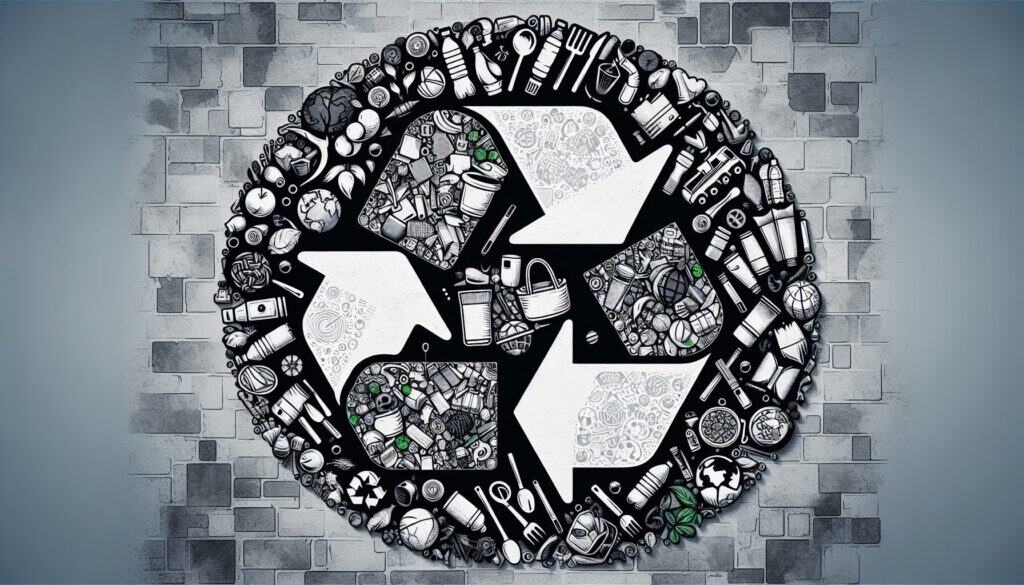To identify and eliminate activities that consume resources but do not add value for the customer.
- Methodologies: Customers & Marketing, Economics, Product Design
Waste Reduction (Muda)

Waste Reduction (Muda)
- Continuous Improvement, Efficiency, Lean Manufacturing, Lean Production, Process Improvement, Seven Wastes, Value Stream Mapping, Waste Elimination Strategies, Waste Reduction
Objective:
How it’s used:
- Part of the Lean philosophy, Muda focuses on categorizing and systematically removing non-value-adding activities from processes. The common seven wastes (often expanded to eight) are: Transportation, Inventory, Motion, Waiting, Overproduction, Over-processing, and Defects (plus Non-utilized Talent).
Pros
- Leads to increased efficiency, reduced costs, and improved quality; Enhances customer satisfaction by focusing on value; Simplifies processes; Empowers employees to identify and eliminate waste.
Cons
- Can be challenging to identify all forms of waste, especially in non-manufacturing settings; Requires a cultural shift towards continuous improvement; Eliminating some "waste" (e.g., necessary inspections) without careful consideration can be detrimental.
Categories:
- Economics, Lean Sigma, Manufacturing, Problem Solving, Quality
Best for:
- Improving efficiency and profitability by systematically removing non-value-adding activities from any process.
Waste Reduction (Muda) methodology finds extensive applicability across diverse industries such as manufacturing, healthcare, software development, and logistics, where the demand for efficiency and quality is paramount. In manufacturing settings, for example, organizations can identify and minimize overproduction by optimizing production schedules and aligning output with actual market demand; in healthcare, reducing patient wait times and unnecessary steps in workflows can substantially enhance service delivery and patient satisfaction. This approach is particularly effective during the design and development phases of a product, where teams can analyze workflows and processes to uncover inefficiencies that may lead to cost overruns or delays. Participants typically include cross-functional teams composed of engineers, designers, quality assurance professionals, and management, who collaboratively assess processes to identify wasteful activities. By involving employees at all levels, organizations cultivate a culture of continuous improvement, where individuals are encouraged to contribute their ideas for eliminating inefficiencies. This methodology not only leads to direct cost reductions through decreased resource utilization and waste but also enhances product quality by reducing defects and rework, creating a win-win scenario for both the business and its customers. Engaging in this systematic waste reduction builds resilience, enabling organizations to adapt more readily to market changes while maintaining a focus on delivering value.
Key steps of this methodology
- Identify value from the customer's perspective.
- Map the value stream and visualize current processes.
- Evaluate each step to categorize waste according to the seven wastes.
- Develop a plan to eliminate non-value-adding activities.
- Implement changes to improve flow and create a more efficient process.
- Measure the impact of changes and analyze the results.
- Sustain improvements through continuous monitoring and adjustments.
Pro Tips
- Conduct root cause analysis for each waste category to identify the underlying issues and eliminate them effectively.
- Implement Continuous Improvement (Kaizen) initiatives that encourage team members to identify and propose waste reduction strategies regularly.
- Utilize Value Stream Mapping to visualize processes and uncover hidden waste, enhancing decision-making for process improvements.
To read and compare several methodologies, we recommend the
> Extensive Methodologies Repository <
together with the 400+ other methodologies.
Your comments on this methodology or additional info are welcome on the comment section below ↓ , so as any engineering-related ideas or links.
Historical Context
1950
1958
1960
1960
1960
1960
1963
1950
1950
1960
1960
1960
1960
1962
1970
(if date is unknown or not relevant, e.g. "fluid mechanics", a rounded estimation of its notable emergence is provided)















Related Posts
Monte Carlo Simulation
Model-Based Testing
Model Checking
Mixed Methods Research
Mistake Proofing (Poka-Yoke)
Mission Profile Testing